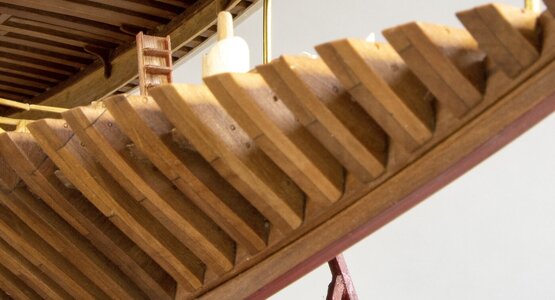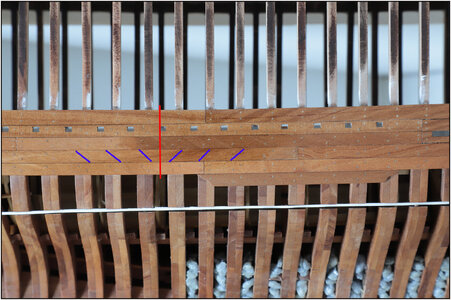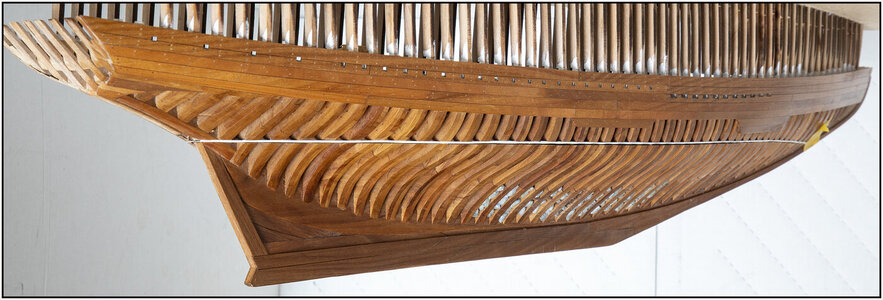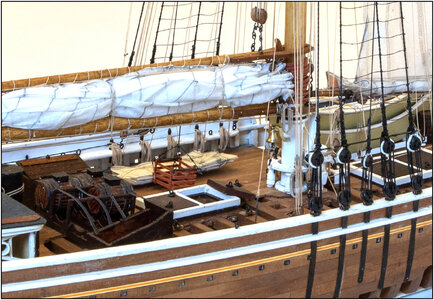I made some extra samples for the treenails. The size of 0,5 mm gives me the best view.
Supported by the Saga-info:
The outside of the treenails was 1 3/8" = 1.375" = 34,925 mm.
On scale 1:72 34,925 mm = 0,485 mm = 0,019".
In the drilled holes of 0,5 mm, a toothpick pointed in the Drawplate 22 fits well.
With this result on the finished frame 1, fitted in the keel:
View attachment 213563
I accentuated the treenails with the tip of a auto-pencil which is using 0.5mm fillings:
View attachment 213566
It is depending how flat the light floods over te frame to see more of less of the treenail it self or the accent.
The front and the back of the frame has 1 layer of mat varnish.
I also made a sample with the inside of the hole blackening with the pencil, but it gives no much extra on the view.
Regards, Peter










